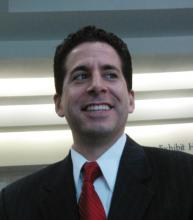SAN DIEGO – Ventricular assist devices appear to be a "reasonable strategy" for supporting certain patients who have failing cardiac grafts and are waiting for a new heart, concludes a retrospective review of more than 1,500 patients who had a second transplant.
In the group who had retransplantation at least 1 year after their first transplantation, median survival was about 7 years. There was no difference between patients bridged with a ventricular assist device (VAD) and those who did not have bridging with any type of mechanical circulatory support (MCS), according to results reported at the annual meeting of the International Society for Heart and Lung Transplantation.
But survival was poor for those who were bridged after any interval with extracorporeal membrane oxygenation (ECMO) and for those who underwent retransplantation because they had primary graft failure or a hyperacute rejection, regardless of whether they were mechanically supported.
"The use of ECMO to bridge any patient to retransplantation does not appear judicious, nor does the use of MCS to bridge patients with primary graft failure or hyperacute rejection to retransplantation," said coinvestigator Dr. David L.S. Morales of the departments of surgery and pediatrics at the Texas Children’s Hospital in Houston. "However, the use of VADs to bridge patients to transplant after a year could be a reasonable strategy."
Although MCS is widely accepted for bridging patients to initial heart transplantation, its use for bridging to retransplantation has not been well studied. The investigators therefore took a closer look at this issue, analyzing data from the United Network for Organ Sharing (UNOS) database for 1,535 patients who underwent cardiac retransplantation during 1982-2009.
Results showed that just 8% of the patients were bridged to retransplantation, with a VAD in about two-thirds of cases and ECMO in the other third. The mean age was 41 years in the former and 35 years in the latter, with children (younger than age 18) comprising 15% and 35%, respectively.
The patients bridged to retransplantation were significantly more likely than were their nonbridged counterparts to have primary graft failure or hyperacute rejection (54% vs. 11%) and significantly less likely to have chronic rejection (16% vs. 63%).
And the bridged patients by and large underwent retransplantation early, with 64% in the VAD group and 76% in the ECMO group retransplanted within 3 months of their primary transplantation, compared with just 12% of their nonbridged peers.
"Regardless of MCS, patients retransplanted for primary graft failure or hyperacute rejection do not do well," Dr. Morales commented. Specifically, in patients with these indications for retransplantation, the 1-year mortality rate was 83%, with essentially no difference according to whether they received bridging or the type.
In the entire study population, median overall survival after retransplantation was 6.1 years in nonbridged patients, significantly longer than the 1.5 years in VAD-bridged patients and the 30 days in ECMO-bridged patients.
But when analyses were restricted to patients who underwent retransplantation at least 1 year after primary transplantation, median survival was similar in nonbridged and VAD-bridged patients, at 7.0 and 6.9 years. Compared with those groups, however, survival was significantly shorter – just 6 months – in the ECMO group.
"Patients bridged to retransplant with ECMO have poor outcomes regardless of timing or indication," Dr. Morales concluded of the findings. "And all patients retransplanted for hyperacute rejection or primary graft failure do poorly, regardless of MCS," he said. "However, patients who are bridged with a VAD to retransplant that is done a year post–primary transplant do have similar outcomes as compared to retransplant patients without MCS."
As for study limitations, "it is very important to note that we do not know the number of patients placed on MCS as a bridge to transplant who died while on support," he pointed out.
Despite the more favorable findings for VAD bridging, his pediatric patients needing retransplantation in adolescence often have chronic vasculopathy in their graft, Dr. Morales said. "They are a very, very difficult group to support with mechanical support with LVADs because we have to continue the immunosuppression," and the patients often die from infections as a result.
"It’s one of the reasons I’m interested in the total artificial heart, because the ability to take the heart out completely and stop immunosuppression I think will help bridge those patients," he commented. "The total artificial heart has lasted in patients for quite a long period of time, and I think eventually will start to be used maybe as a bridge to destination, as it was originally intended."


